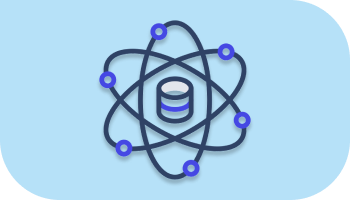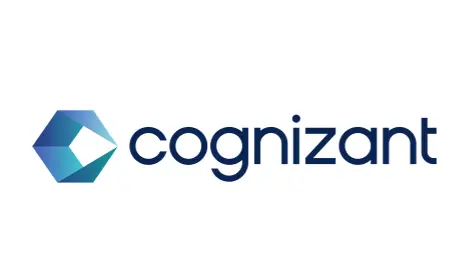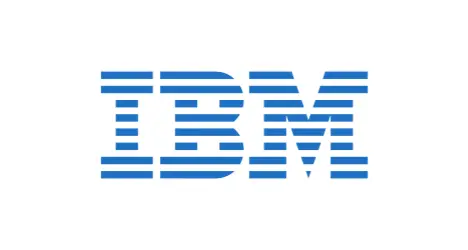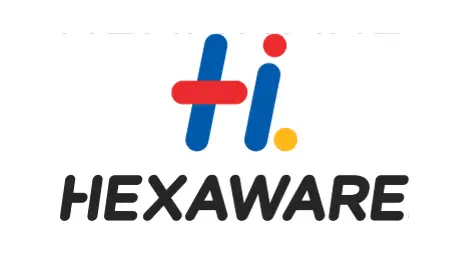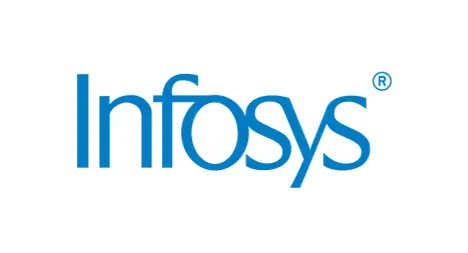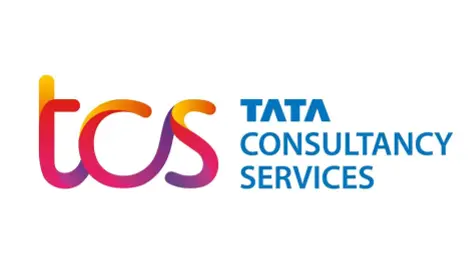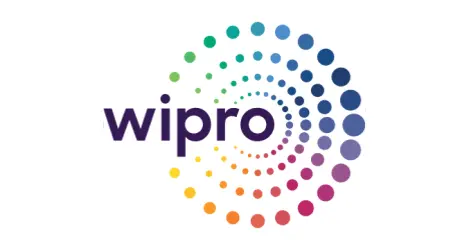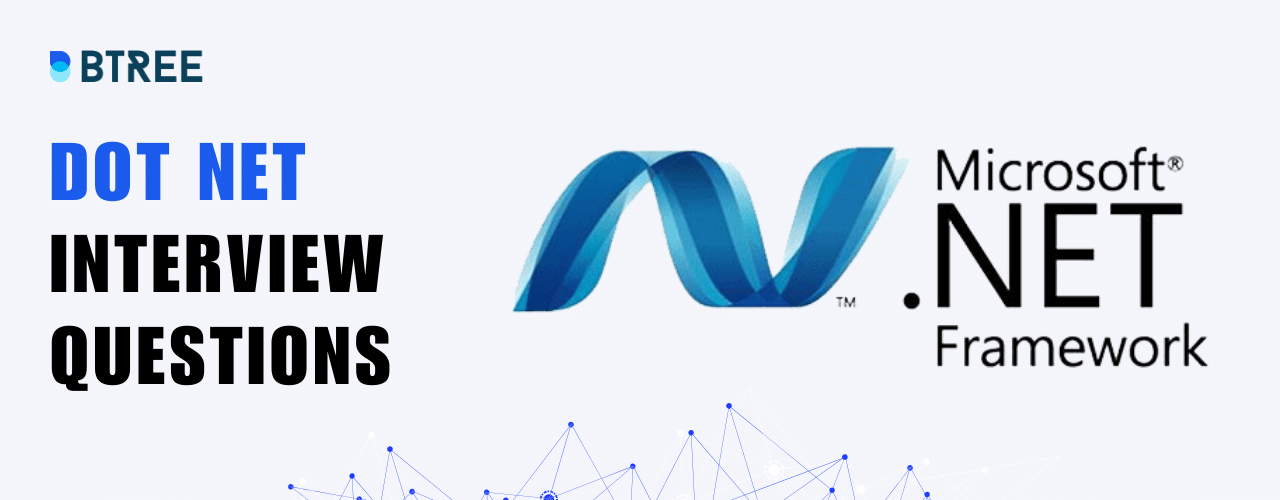Data Science Course Key Highlights
Overview of Data Science Course in Chennai
The Data Science masters program teach you all you need to know about Data Science, real-time analytics, statistical computing, SQL, parsing machine-generated data, and finally Deep Learning in Artificial Intelligence. Moreover, you also learn how to use Spark for Data Science and Big Data Analytics in this program.
What is Data Science Master?
Data science is a multidisciplinary area that everyone, from engineers to marketers, may participate in. Data science is the process of gathering and analysing massive amounts of data in order to get profound insights that may be utilized for corporate decisions, product development, consumer interaction, and so on.
Why master data science is important?
Because it integrates tools, techniques, and technologies to derive meaning from data, data science is significant. Due to the growth of gadgets that can automatically gather and store data, modern companies are overrun with data. In the areas of e-commerce, healthcare, banking, and every other facet of human existence, online systems and payment portals collect more data. We have access to enormous amounts of text, audio, video, and image data.
What is the process of Data science master program?
The data science process is often started by a business challenge. With the help of business stakeholders, a data Scientist learn what the business requires. Once the issue has been identified, the data Scientist can use the OSEMN data science approach to resolve it:
Obtain Data
Data might be pre-existing, recently collected, or downloaded from an online data source. Data Scientists can obtain information from internal or external databases, firm CRM software, web server logs, social media, or trustworthy third-party sources.
Scrub Data
Data scrubbing, also known as data cleaning, is the act of standardising data in accordance with a specified format. It includes dealing with missing data, correcting data mistakes, and eliminating any outliers in the data.
• Converting all dates to a similar, uniform format.
• Removing extra spaces or spelling errors.
• Eliminating commas from huge numbers or correcting mathematical errors.
Explore Data
Data exploration is the early investigation of data used to develop future data modelling plans. Using descriptive statistics and data visualisation tools, Data Scientists get a basic knowledge of the data. The data is then explored to uncover intriguing patterns that might be investigated or implemented.
Model Data
Software and machine learning algorithms are utilised to get deeper insights, forecast outcomes, and prescribe the best course of action. The training data set is subjected to machine learning techniques including association, classification, and clustering. To evaluate the correctness of the results, the model may be evaluated against predetermined test data.
What are the different Data Science master technologies?
Data science professionals use sophisticated technology like:
Artificial Intelligence: Machine learning models and accompanying software are used for predictive and prescriptive analyses.
Cloud Computing: Cloud technologies now provide Data Scientists with the processing power and flexibility needed for advanced data analyses.
Internet of Things (IoT) Refers to many gadgets that may connect to the internet automatically. These gadgets gather information for projects using data science. They produce enormous amounts of data that can be mined and extracted.
Quantum Computing: Quickly completing intricate computations is a capability of quantum computers. They are used by knowledgeable Data Scientists to create sophisticated quantitative algorithms.
What does Data Scientist do?
As part of the data science process, a data Scientist might make use of a variety of different methodologies, tools, and technologies. They choose the optimum combinations based on the issue at hand for quicker and more precise outcomes.
The responsibilities and daily tasks of a data Scientist vary according to the needs and size of the firm. Although they frequently adhere to the data science approach, the specifics may change. To guarantee that the entire data science process is followed and that business objectives are met, a data Scientist may collaborate with other analysts, engineers, machine learning specialists, and statisticians in bigger data science teams.
What Skills Do You Need to Be a Successful Data Scientist?
Data Scientists require a unique combination of technical and soft abilities. The following are some essential technical abilities for prospective Data Scientists, followed by soft skills.
Technical Skills
• Statistics
• Coding and programming
• Modelling for prediction
• Deep learning and machine learning
• Data manipulation, cleaning, and preparation
Soft Skills
• Outstanding business acumen
• Problem-solving
• Thinking critically
• Communication
• Collaboration
Talk To Us
We are happy to help you 24/7
Career Transition to Data Science
60%
Avg Salary Hike
40 LPA
Highest Salary
500+
Career Transitions
300+
Hiring Partners
Skills Covered on Data Science Course
Python
Data Science
Machine Learning
NLP
Data visualization
Data Analysis
Statistics
Model
Tools Covered on Data Science Course









Data Science Course Fees
09
Sep
SAT - SUN
08:00 PM TO 11:00 PM IST (GMT +5:30)
16
Sep
SAT - SUN
08:00 PM TO 11:00 PM IST (GMT +5:30)
30
Sep
SAT - SUN
08:00 PM TO 11:00 PM IST (GMT +5:30)
Unlock your future with our
"Study Now, Pay Later"
program, offering you the opportunity to pursue your education without financial constraints.
EMI starting at just
₹ 3,333 / Months
Available EMI options
3
Months EMI
6
Months EMI
12
Months EMI

Data Science Corporate Training
Enroll in our Corporate Training program today and unlock the full potential of your Employees
Curriculum for Data Science Masters Program
Foundations of Data Science
- Introduction to Data Science
- High level view of Data Science, Artificial Intelligence & Machine Learning
- Subtle differences between Data Science, Machine Learning & Artificial Intelligence
- Approaches to Machine Learning
- Terms & Terminologies of Data Science
- Understanding an end to end Data Science Pipeline, Implementation cycle Math for Data Science, Machine Learning and Artificial Intelligence Linear Algebra
- Matrices, Matrix Operations Eigen Values, Eigen Vectors Scalar, Vector, and Tensors Prior and Posterior Probability Conditional Probability Calculus
- Differentiation, Gradient, and Cost FunctionsGraph Theory
Statistics for Data Science
- Descriptive Statistics
- Types of Data (Discrete vs Continuous)
- Types of Data (Nominal, Ordinal)
- Measures of Central Tendency(Mean, Median, Mode)
- Measures of Dispersion (Variance, Standard Deviation)
- Range, Quartiles, Inter Quartile Ranges
- Measures of Shape (Skewnessand Kurtosis)
- Tests for Association (Correlation and Regression)
- Random Variables
- Probability Distributions
- Standard Normal Distribution
- Probability Distribution Function
- Probability Mass Function
- Cumulative Distribution Function
- Inferential Statistics
- Statistical sampling& Inference
- Hypothesis Testing
- Null and Alternate Hypothesis
- Margin of Error
- Type I and Type II errors
- One-Sided Hypothesis Test, Two-Sided Hypothesis Test
- Tests of Inference: Chi-Square, T-test, Analysis of Variance
- t-value and p-value
- Confidence Intervals
Numpy
- Loading data with Numpy
- Comparing Numpy with Traditional Lists
- Numpy Data Types
- Indexing and Slicing
- Copies and Views
- Numerical Operations with Numpy
- Matrix Operations on Numpy Arrays
- Aggregations functions
- Shape Manipulations
- Broadcasting
- Statistical operations using Numpy
- Resize, Reshape, Ravel
- Image Processing with Numpy
Pandas
- Basics of Pandas
- Loading data with Pandas
- Series
- Operations on Series
- Data Framesand Operations of Data Frames
- Selection and Slicing of Data Frames
- Descriptive statistics with Pandas
- Map, Apply, Iterations on Pandas Data Frame
- Working with text data
- Multi-Index in Pandas
- GroupBy Functions
- Merging, Joining and Concatenating Data Frames
- Visualization using Pandas
Matplotlib & Seaborn
- Anatomy of Matplotlib figure
- Plotting Line plots with labels and colors
- Adding markers to line plots
- Histogram plots
- Scatter plots
- Size, Color, and Shape selection in Scatter plots.
- Applying Legend to Scatter plots
- Displaying multiple plots using subplots
- Boxplots, scatter_matrix and Pair plots
- Basic Plotting using Seaborn
- Violin Plots
- Box Plots
- Cat Plots
- Facet Grid
- Swarm Plot
- Pair Plot
- Bar Plot
- LM Plot
- Variations in LM plot using hue, markers, row, and columns
Jupyter Notebook
- Exploratory Data Analysis
- Pipeline ideas
- Exploratory Data Analysis
- Feature Creation
- Evaluation Measures Data Analytics Cycle ideas
- Data Acquisition
- Data Preparation
- Data cleaning
- Data Visualization
- Plotting
- Model Planning & Model Building data
Inputting
- Reading and writing data to text files
- Reading data from a CSV
- Reading data from JSON Data preparation
- Selection and Removal of Columns
- Transform
- Rescale
- Standardize
- Normalize
- Binarize
- One hot Encoding
- Imputing
- Train, Test Splitting
Machine Learning
- ntroduction to Machine Learning
- Applications of Machine Learning
- Supervised Machine Learning
- Classification
- Regression
- Unsupervised Machine Learning
- Reinforcement Learning
- Latest advances in Machine Learning
- Model Representation
- Model Evaluation
- Hyper Parameter tuning of Machine Learning Models. Evaluation of ML Models.
- Estimating and Prediction of Machine Learning Models Deployment strategy of ML Models.
- Supervised Machine Learning - Classification
- Classification methods & respective evaluation
- K Nearest Neighbors
- Decision Trees
- Naive Bayes
- Stochastic Gradient Descent
- SVM
- Linear
- Non linear
- Radial Basis Function
- Random Forest
- Gradient Boosting Machines
- XGboost
- Logistic regression Ensemble methods
- Combining models
- Bagging
- Boosting
- Voting
- Choosing best classification method Model Tuning
- Train Test Splitting
- K-fold cross-validation
- Variance bias tradeoff
- L1 and L2 norm
- Overfit, underfit along with learning curves variance bias sensibility using graphs
- Hyper Parameter Tuning using Grid Search CV Respective performance measures
- Different Errors (MAE, MSE, RMSE)Accuracy, Confusion Matrix, Precision, Recall
- Supervised Machine Learning - Regression
- Regression
- Linear Regression
- Variants of Regression
- Lasso
- Ridge
- Multi Linear Regression
- Logistic Regression (effectively, classification only)
- Regression Model Improvement
- Polynomial Regression
- Random Forest Regression
- Support Vector Regression Respective performance measures
- Different Errors (MAE, MSE, RMSE)
- Mean Absolute Error
- Mean Square Error
- Root Mean Square Error Unsupervised Machine Learning Clustering
- K means
- Hierarchical Clustering
- DBSCAN
- Association Rule Mining
- Association Rule Mining.
- Market Basket Analysis using Apriori Algorithm
- Dimensionality reduction using Principal Component Analysis (PCA)
- Natural Language Processing
- Text Analytics
- Stemming, Lemmatization, and Stop word removal. POS tagging and Named Entity Recognition
- Bigrams, Ngrams, and colocationsTerm Document Matrix
- Count Vectorizer
- Term Frequency and Advanced Analytics
- Time series
- Time-series Analysis.
- ARIMA example Recommender Systems
- Content Based Recommendation
- Collaborative Filtering
- Reinforcement Learning
- Basic concepts of Reinforcement Learning Action
- Reward
- Penalty Mechanism Feedback loop Deep Q Learning
- Artificial Intelligence
Artificial Neural Networks
- Neural Networks& terminologies
- Nonlinearity problem,illustration
- Perceptron learning
- Feed ForwardNetwork and Back propagation
- Gradient Descent
- Mathematics of Artificial neural networks
- Gradients
- Partial derivatives
- Linear algebra o Li
- LD
- Eigen vectors
- Projections
- Vector quantization
- Overview of tools used in Neural Networks
- Tensor Flow
- Keras Deep Learning Deep Learning
- Tensorflow & Kerasinstallation
- More elaboratediscussion on cost function
- Measuring accuracyof hypothesis function
- Role of gradient functionin minimizing cost function
- Explicit discussion of Bayes models
- Hidden MarkovModels (HMM)
- Optimization basics
- Sales Prediction of a Gaming company using Neural Networks
- Build an Image similarity engine.
Deep Learning with Convolutional NeuralNets
- Architecture of CNN
- Types of layers in CNN
- Different Filtersand Kernals
- Building an Image classifier with and without CNN Recurrent neural nets
- Fundamental notions & ideas o Recurrent neurons
- Handling variablelength sequences
- Training a sequence classifier
- Training to predict Time series
Cloud Computing for Data Science
- Introduction to CloudComputing
- Amazon Web Services Preliminaries - S3, EC2, RDS
- Big data processing on AWS using Elastic Map Reduce (EMR) Machine Learning using Amazon Sage Maker
- Deep Learning on AWS Cloud
- Natural Language processing using AWS Lex
- Analytics services on AWS Cloud
- Data Warehousing on AWS Cloud Creating Data Pipelines on AWS Cloud
DevOps for Data Science
- Introduction to DevOps for Data Science Tasks in Data Science Development Deploying Models in Production
- Deploying Machine Learning Models as Services Running Machine Learning Services in Containers Scaling ML Services with Kubernetes
“Accelerate Your Career Growth: Empowering You to Reach New Heights in Data Science Masters Program"
Data Science Course Training Options
Data Science Classroom Training
50+ hours of Live Classroom Training Real-Time trainer assistance Cutting-Edge on Data Science Masters Program Course Tools Non-Crowded training batches Work on real-time projects Flexible timings for sessions

Data Science Online Training
50+ Hours of online Data Science Masters Program Training 1:1 personalised assistance Practical knowledge Chat and discussion panel for assistance Work on live projects with virtual assistance 24/7 support through email, chat, and social media.
Data Science Masters Program Certification
Data Science Certification Program in Chennai is a professional credential that demonstrates the candidate’s ability to gain entire topic knowledge in addition to understanding all of the fundamental tools and algorithms used by Data Science specialists.
The Data science master training certificate increase the value of your resume. As a consequence, you have access to a diverse range of job opportunities. With the aid of this Certificate, you obtain a new skills in the creation of advanced concepts in Data Science.
The course syllabus includes all areas of Machine Learning, Statistics, Python programming, Big Data Analytics, R, Cloud Computing, etc.
Knowledge Hub with Additional Information of Data Science Masters Program
Advantages of Data Science
Benefits of Data Science: Data is being created at an alarming rate in today’s environment. Every second, a large amount of data is created, whether it is from Facebook users or other social networking sites, phone calls, or data generated by other businesses. Because of this massive volume of data, the area of Data Science provides a variety of advantages. Some of the benefits are as follows:
Various Job Opportunities: Because it is in high demand, it has created a plethora of job possibilities in its different domains. Data Scientist, Data Analyst, Research Analyst, Business Analyst, Analytics Manager, Big Data Engineer, and more titles are among them.
Advantages for businesses include: Data Science assists firms in determining how and when their products sell best, ensuring that things are always supplied to the appropriate location and right time. The organisation makes faster and better judgements in order to enhance efficiency and earn bigger revenues.
High-paying occupations and career prospects include: As Data Scientist continues to be the sexiest career, the pay for this position is also excellent. A Data Scientist earns an annual average pay of $106,000 per year, according to a Dice Salary Survey.
Advantages of Hiring: It has made it simpler to filter data and find the top people for a business. Big Data and data mining have aided recruiting teams in the processing and selection of CVs, aptitude tests, and games.
What are the Tools used in Data Science?
Algorithms.io.
This tool is a machine-learning (ML) resource that transforms raw data into real-time insights and actionable events, specifically in the context of machine-learning.
Advantages:
Because it is hosted on a cloud platform, it offers all of the SaaS benefits of scalability, security, and infrastructure.
Machine learning is made simple and accessible to developers and businesses.
Apache Hadoop
This free and open-source platform generates simple programming models and distributes large data sets across thousands of computer clusters. Hadoop is equally useful for research and production. Hadoop is ideal for complex computations.
Advantages:
• Open-source
• Extremely scalable
• There are several modules available.
• Failures are dealt with at the application layer.
Apache Spark
The most popular data science tool, this all-powerful analytics engine is also known as “Spark.” It is well-known for providing lightning-fast cluster computing. Spark has access to a variety of data sources, including Cassandra, HDFS, HBase, and S3. It can also easily handle big datasets.
Advantages:
• Over 80 high-level operators streamline the parallel app development process.
• Can be used interactively from the Scale, Python, and R shells.
• The advanced DAG execution engine provides in-memory processing and acyclic data flow.
BigML
This application is another top-rated data science resource that gives users with a fully interactive, cloud-based GUI environment perfect for processing ML algorithms. Depending on your needs, you may register a free or premium account, and the online interface is simple to use.
Advantages:
• A low-cost resource for developing complicated machine learning solutions.
• Predictive data patterns are transformed into clever, practical solutions that anybody may use.
• It may be deployed in the cloud or on-premises.
D3.js
D3.js is a JavaScript toolkit that allows you to create interactive visualisations in your web browser. It emphasises web standards in order to fully utilise all of the advantages of contemporary browsers without being hampered by a proprietary framework.
Advantages:
• D3.js is based on the widely used JavaScript and is ideal for client-side
• Internet of Things (IoT) interactions.
• Useful for producing interactive visuals.
Data Robot
This technology is characterised as an advanced platform for automated machine learning. It is used by Data Scientists, executives, IT professionals, and software developers to help them construct better quality predictive models faster.
Advantages:
• You can train, test, and compare several different models with a single click or line of code.
• It includes Python SDK and APIs.
• It comes with a straightforward model deployment procedure.
Excel
Yes, even this ubiquitous old database worker receives some attention here! Originally designed by Microsoft for spreadsheet computations, it has now acquired broad usage as a tool for data processing, visualisation, and advanced calculations.
Advantages:
• With a single click, you may sort and filter your data.
• The Advanced Filtering option allows you to filter data depending on your own criteria.
• Well-known and ubiquitous
ForecastThis
This is the tool for you if you’re a data Scientist looking for automated predictive model selection. Forecast This enables investment managers, Data Scientists, and quantitative analysts to leverage in-house data to maximise complicated future objectives and generate reliable projections.
Advantages:
• Simple to scale to any size task
• Algorithms for robust optimization are included.
• Simple API and spreadsheet plugins
BigQuery by Google
This is a highly scalable, server less data warehousing solution designed for efficient data analysis. It does super-fast SQL queries on append-only tables using Google’s infrastructure-based computing power.
Advantages:
• Extremely quick
• Reduces expenses because customers just pay for storage and computer use.
• Simple to scale
Java
Java is a well-known object-oriented programming language that has been around for many years. It is straightforward, architecture-independent, secure, platform-independent, and object-oriented.
Advantages:
• If combined with Java 8 and Lambdas, it is suitable for huge science projects.
• Java includes a plethora of tools and packages that are ideal for machine learning and data research./p>
• Simple to grasp
MATLAB
MATLAB is a high-level language that works in conjunction with an interactive environment to do numerical calculation, programming, and visualisation. MATLAB is a strong tool and programming language that is great for graphics, math, and programming.
Advantages:
• Intuitive application
• It analyses data, builds models, and makes algorithms.
• It scales analysis to run on clouds, clusters, and GPUs with a few easy code modifications.
MySQL
MySQL, another well-known and widely used programme, is one of the most popular open-source databases accessible today. It’s great for retrieving information from databases.
Advantages:
• Users may simply save and access structured data.
• Java and other programming languages are supported.
• It is a relational database management system that is open source.
NLTK
Natural Language Toolkit (NLTK) is an open-source tool that deals with human language data and is a popular Python application builder. NLTK is perfect for beginning Data Scientists and students.
Advantages:
• It includes a set of text processing libraries.
• Over 50 simple interfaces are available.
• It includes an active discussion forum where you may learn a lot of new things.
Quick Miner
This data science solution is a single platform that combines data preparation, machine learning, and model deployment to simplify and accelerate data science activities. It is widely used in the industrial, telecommunications, utilities, and financial sectors.
Advantages:
• All of the materials are housed on a single platform.
• The GUI method is built on a block diagram, which simplifies these blocks into a plug-and-play environment.
• Models machine learning algorithms using a visual workflow designer.
SAS
This data science tool is specifically built for statistical procedures. It is a closed-source proprietary software application for huge enterprises that specialises in processing and analysing vast volumes of data. It is well-supported by its corporation and quite dependable. Still, you get what you pay for with SAS, which is pricey and best suited for large corporations and organisations.
Advantages:
• There are several analytics functions that span anything from social media to automated forecasting to geographical data.
• It has interactive dashboards and reports that allow the user to go directly from reporting to analysis.
• Advanced data visualisation techniques such as auto charting are used to provide attractive findings and data.
Data science master vs Machine learning
Because data science encompasses a wide range of subjects, machine learning falls under the purview of data science. Machine learning employs a variety of approaches, including regression and supervised clustering. In contrast, the data’ in data science may or may not be generated by a machine or a mechanical process. The key distinction between the two is that data science, as a larger phrase, encompasses not just algorithms and statistics, but also the complete data processing approach.
Data science is the synthesis of several parent disciplines, including data analytics, software engineering, data engineering, machine learning, predictive analytics, data analytics, and others. It encompasses the retrieval, collecting, ingestion, and processing of massive volumes of data, often known as big data. Data science is responsible for adding structure to huge data, searching for compelling patterns, and advising decision-makers on how to successfully implement changes to meet business goals. Data analytics and machine learning are two of the several tools and methods employed by data science.
Data science vs Data analysis
• Data Science and Data Analytics both deal with Big Data in their own ways. Data Science is a broad term that includes Data Analytics. Mathematics, Statistics, Computer Science, Information Science, Machine Learning, and Artificial Intelligence are all part of Data Science.
• Data mining, data inference, predictive modelling, and ML algorithm development are all used to discover patterns from complicated information and turn them into effective business strategies. Data analytics, on the other hand, is primarily concerned with Statistics, Mathematics, and Statistical Analysis.
• While Data Science seeks significant connections across big datasets, Data Analytics seeks to elucidate the specifics of derived insights. In other words, Data Analytics is a subset of Data Science that focuses on providing more detailed solutions to the problems raised by Data Science.
• Data Science tries to answer new and unique questions that might drive corporate innovation. Data Analysis, on the other hand, seeks answers to these questions and determines how they might be implemented inside a company to stimulate data-driven innovation.
Roles and Responsibility of data Scientist
• Data mining is the process of collecting useful data from valuable data sources.
• Selecting features, creating and optimising classifiers with machine learning tools.
• Performing structured and unstructured data preparation Improving data gathering techniques to capture all important information for constructing analytic systems.
• Data processing, cleaning, and validation to ensure data integrity for analysis.
• Analysing massive volumes of data to discover patterns and solutions.
• Making predictions and machine learning algorithms.
• Clear presentation of results.
• Provide answers and methods for dealing with corporate difficulties.
• Work with the business and IT teams to achieve your goals.
Data Scientist salary package
The average beginning salary for a Data Scientist is roughly 3.8 Lakhs per year (31.7k per month). A Data Scientist must have at least one year of experience.
An Entry Level Data Scientist with less than three years of experience receives an annual salary of 9.6 Lakhs. A mid-career Data Scientist with 4-9 years of experience makes an average pay of 14.8 Lakhs per year, while an experienced Data Scientist with 10-20 years of experience earns an average salary of 20.5 Lakhs per year.
Our Student feedback
Hear From Our Hiring Partners
Lead Recruiter at Wipro
Lead Recruiter at HCL
BTREE's Placement Guidance Process


Placement Support
Have queries? We’re here for you! We support you with 24X7 availability with all comprehensive guidance.

Data Science Masters Program Sample Resume
Build a robust resume with battle-cut tools to land your dream job. Impress any recruiter with a rock-solid CV and personality!

Free Career Consultation
Overwhelmed about your future career? We offer free career consultation that helps you to figure out what you want to become.
Our Graduates Works At


FAQ of Data Science Masters Program Course
Is Learning Data Science master program worth it?
With the increase in technology, various tech-based food savers are experiencing an increase in demand. Due to the high-paying career opportunities in the industry, students are especially drawn to course data science. Every day, a massive amount of data is generated, transferred, and sourced, and it must be handled. Therefore, companies require qualified persons to their organization.
Is Data Science master program difficult in field?
Data science is a difficult field. There are several reasons for this, the most notable of which is that it requires a diverse range of skills and expertise. Algorithms and software engineering are examples of computer science. The second half of the equation is domain knowledge, which implies understanding something about the field in which you engage.
Learn a Data Science maseter program in 3 months! How?
This programme was divided into three months:
• The first month is dedicated to data analysis.
• The second month is focused on machine learning.
• In month three, we’ll discover production-level technologies that data scientists use in the real world.
• A three-month curriculum it'll take you a complete novice to expert in the field of data science. You don’t even need to know how to code. We created it for anybody looking to develop their abilities and obtain paid job as soon as possible, whether through a full-time career or contract work. You’ll be studying a variety of technologies, like sequel Python Hadoop and even data storytelling, which all contribute to the overall data science pipeline.
Why should I learn data science master course at BTree Systems?
BTree Systems are one of the leading IT training institutes in Chennai. We have trained students from various fields on technology. The below unique benefits.
• Fully equipped classes
• Hands-on training
• Experts devised course curriculum
• Adept Trainers Flexible batch timings
• Industry Exposure
• Reasonable Fee and Placement Assistance
Is data science master course is that best career path for me?
Analytical minds who like coding and dealing with data are excellent candidates for data science training. People that are interested in machine learning, deep learning, and AI can also become data scientists.
What topics can I study related to data science master training?
After graduating, you can study about AI, deep learning, machine learning, coding languages, and other topics.
Is there an internship opportunity with this data science master training?
Yes, we providing internship for students after the course completion certificate, it should be assigned a live project that he must complete in a month.
Is there any prerequisite for this data science master course?
Yes, you need to have some experience of coding, OS - LINUX, and automation as data science incorporates software and IT sectors. It would be ideal to have knowledge of Python, PERL, and Java. Additionally, crucial is networking expertise.
Does BTree Systems provide job assistance?
BTree Systems provides active placement help to all students who successfully complete the programme. We have strong associations with over 50 leading MNCs globally. It's allow you to work for a variety of fantastic companies, like Sony, Ericsson, TCS, Mu Sigma, Standard Chartered, Cognizant, and Cisco. We can assist you with resume writing and interview preparation.
Does BTree provide EMI options for all courses?
BTree accepts all major credit and debit cards. It also provides all available EMI options for you to choose from according on your preferences. You can speak with one of our advisers to learn more about the various EMI possibilities.
What are the available payment options?
We accept all of the major types of payment choices, an email receipt delivered immediately for all of our courses.
• MasterCard.
• Online banking, Google Pay, PhonePe, PayPal, and Paytm.
Are you Located in any of these locations
Adyar
Anna Nagar
Besant Nagar
Ambattur
Guindy
K.K. Nagar
Koyambedu
Chromepet
Nandanam
OMR
Perungudi
Mylapore
Poonamallee
Porur
Saidapet
Sholinganallur
T. Nagar
Teynampet
Vadapalani
Velachery
Find Us
Address
Plot No: 64, No: 2, 4th E St, Kamaraj Nagar, Thiruvanmiyur, Chennai, Tamil Nadu 600041
